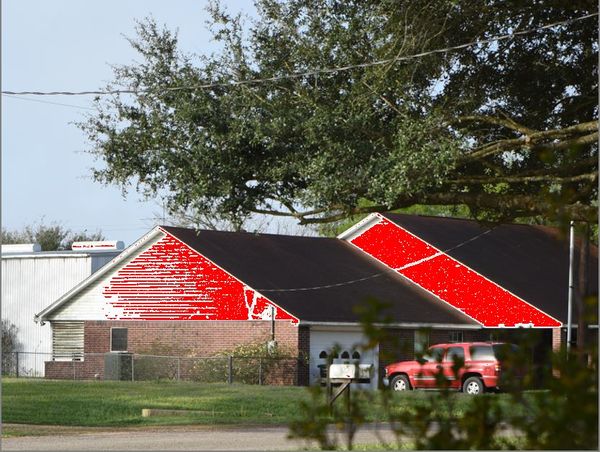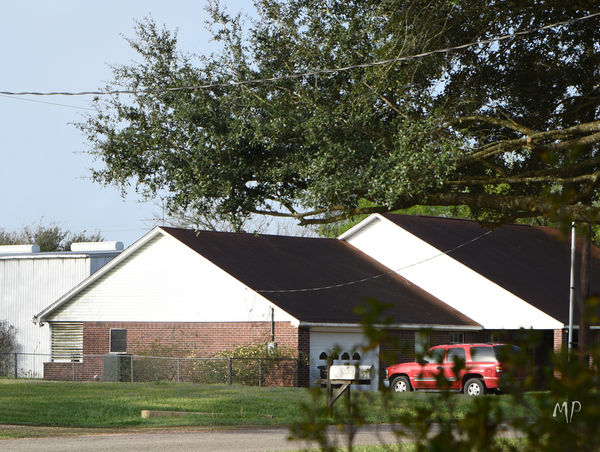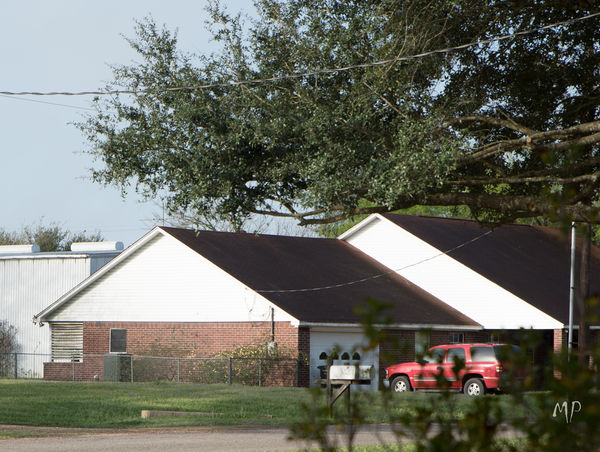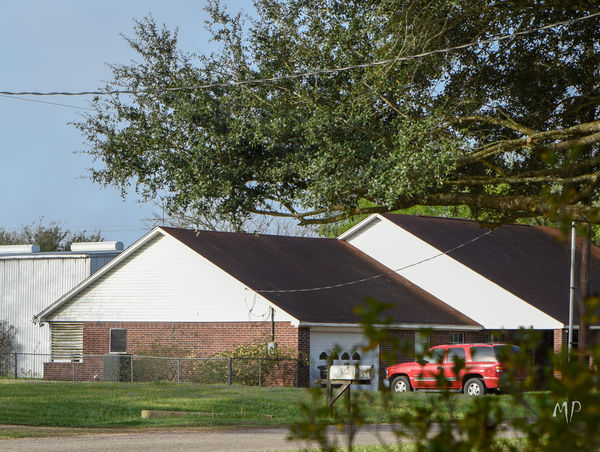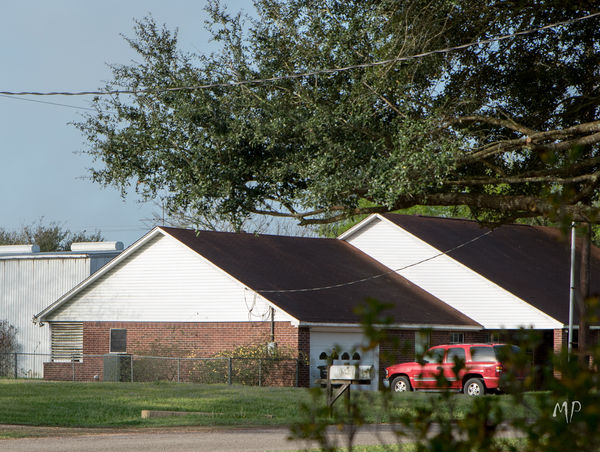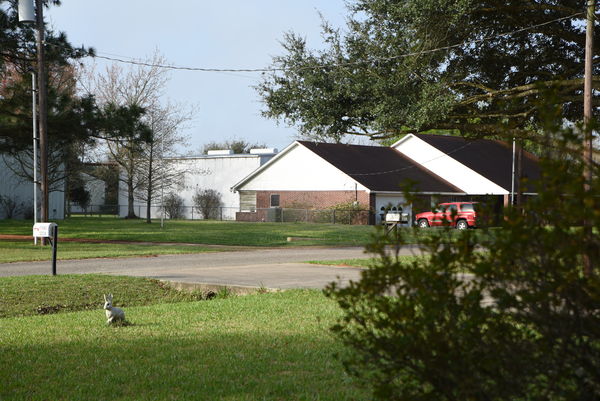Question about Auto ISO
Feb 24, 2017 09:39:11 #
Feb 24, 2017 10:12:48 #
cthahn wrote:
When you are in manual mode, that's exactly what is means. MANUAL, everything. Read your manual and practice.
If we do actually read the fine manual there is much to be learned...
Manual Exposure mode means exactly that, and only that. Exposure is controlled by the aperture and the shutter time, so it merely means those two parameters are manually set.
ISO controls data brightness, not exposure. Like Auto WB and Auto Focus the Auto ISO modes have nothing to do with Auto Exposure vs Manual Exposure.
Feb 24, 2017 10:14:42 #
MikieLBS
Loc: "Southeast of Disorder"
I noticed the same overexposure with auto iso in manual mode as the OP with my d750, but normally only with jpgs. These are examples I shot today. I reset custom controls before test shots with default matrix mode.
The 2 photo are the same, taken with the camera set to JPG fine+RAW. They are SOOC except for cropping. The first pic shows the blown out areas in the jpg photo.
The 2nd is the jpg and the 3rd is RAW.
I processed the 3rd and 4th slightly to show the difference.
The 2 photo are the same, taken with the camera set to JPG fine+RAW. They are SOOC except for cropping. The first pic shows the blown out areas in the jpg photo.
The 2nd is the jpg and the 3rd is RAW.
I processed the 3rd and 4th slightly to show the difference.
Feb 24, 2017 10:28:05 #
amfoto1
Loc: San Jose, Calif. USA
johnmac78 wrote:
Nikon D750 set to auto ISO in manual mode.
Metering set on Matrix mode. ISO max set at 3200
Most all pictures come out over exposed, compared to setting ISO manually.
Camera settings are shutter speed around 1000-1600, aperture F5.6 - F8 (Wildlife Photography with a 150-600 lens)
Any suggestions as to what else I need to adjust or what may be wrong?
John
Metering set on Matrix mode. ISO max set at 3200
Most all pictures come out over exposed, compared to setting ISO manually.
Camera settings are shutter speed around 1000-1600, aperture F5.6 - F8 (Wildlife Photography with a 150-600 lens)
Any suggestions as to what else I need to adjust or what may be wrong?
John
Without seeing a sample photo that includes the EXIF metadata, it's pretty difficult to say.
Best guess... You have accidentally dialed in some + Exposure Compensation.
Or, your computer monitor isn't calibrated... so even though the photos are correctly exposed, it's fooling you into thinking they are over-exposed.
Or, you've set your max ISO to 3200... but what's your minimum ISO setting? That's more relevant to over-exposure problems.
It also could be the meter pattern you've set. Spot metering will behave differently than Center Weighted or Matrix.
But, it also might be actual over-exposure due to some problem with the camera or something else occurring. Impossible to say without seeing sample images with EXIF attached.
Feb 24, 2017 10:31:11 #
amfoto1
Loc: San Jose, Calif. USA
cthahn wrote:
When you are in manual mode, that's exactly what is means. MANUAL, everything. Read your manual and practice.
NOT TRUE when Auto ISO is enabled.
Auto ISO with Manual mode is JUST ANOTHER AUTO EXPOSURE MODE and has to be treated as such.
Feb 24, 2017 11:05:40 #
steve_stoneblossom
Loc: Rhode Island, USA
MikieLBS wrote:
I noticed the same overexposure with auto iso in manual mode as the OP with my d750, but normally only with jpgs. These are examples I shot today. I reset custom controls before test shots with default matrix mode.
The 2 photo are the same, taken with the camera set to JPG fine+RAW. They are SOOC except for cropping. The first pic shows the blown out areas in the jpg photo.
The 2nd is the jpg and the 3rd is RAW.
I processed the 3rd and 4th slightly to show the difference.
The 2 photo are the same, taken with the camera set to JPG fine+RAW. They are SOOC except for cropping. The first pic shows the blown out areas in the jpg photo.
The 2nd is the jpg and the 3rd is RAW.
I processed the 3rd and 4th slightly to show the difference.
I don't see anything in exif that jumps out as user error. However, I would argue that given the dynamic range in this shot, with the stark white siding black roof and large tree, the siding is only slightly clipped. Not sure if I would consider that overexposed under the circumstances. A slight adjustment of highlights (-15) in LR all but eliminates it. Fourth image actually shows clipped shadows in LR.
Feb 24, 2017 11:12:22 #
John, my suggestion is to let the camera do less thinking for you and you make the decisions.
--Bob
--Bob
johnmac78 wrote:
Nikon D750 set to auto ISO in manual mode.
Metering set on Matrix mode. ISO max set at 3200
Most all pictures come out over exposed, compared to setting ISO manually.
Camera settings are shutter speed around 1000-1600, Aperature F5.6 - F8 (Wildlife Photography with a 150-600 lens)
Any suggestions as to what else I need to adjust or what may be wrong?
John
Metering set on Matrix mode. ISO max set at 3200
Most all pictures come out over exposed, compared to setting ISO manually.
Camera settings are shutter speed around 1000-1600, Aperature F5.6 - F8 (Wildlife Photography with a 150-600 lens)
Any suggestions as to what else I need to adjust or what may be wrong?
John
Feb 24, 2017 11:18:23 #
MikieLBS
Loc: "Southeast of Disorder"
steve_stoneblossom wrote:
I don't see anything in exif that jumps out as user error. However, I would argue that given the dynamic range in this shot, with the stark white siding black roof and large tree, the siding is only slightly clipped. Not sure if I would consider that overexposed under the circumstances. A slight adjustment of highlights (-5) in LR all but eliminates it, -6 removes it totally.
Yes, in Lightroom you can turn the highlights down on the jpg until lightrooms red highlight clipping indicator goes away but the white is still blown out. Look again. Blown out white(no detail). The raw shows the individual boards. If you can't tell the difference your monitor is probably not adjust properly.
Yes, the forth shows clipped shadows only because I processed it that way....fade to black is better than flat...
Feb 24, 2017 11:28:26 #
MikieLBS wrote:
I noticed the same overexposure with auto iso in manual mode as the OP with my d750, but normally only with jpgs. These are examples I shot today. I reset custom controls before test shots with default matrix mode.
The 2 photo are the same, taken with the camera set to JPG fine+RAW. They are SOOC except for cropping. The first pic shows the blown out areas in the jpg photo.
The 2nd is the jpg and the 3rd is RAW.
I processed the 3rd and 4th slightly to show the difference.
The 2 photo are the same, taken with the camera set to JPG fine+RAW. They are SOOC except for cropping. The first pic shows the blown out areas in the jpg photo.
The 2nd is the jpg and the 3rd is RAW.
I processed the 3rd and 4th slightly to show the difference.
Multiple comments...
First, none of these are actually SOOC, and it does make a difference when what we really want to see is the Exif data. You've processed every single one of them to put a watermark on the image, and as a result we cannot see the actual original Exif data or even the original image data. Second, the images labled "RAW" are not. They are all JPEG images, processed from the RAW file. The one labeled SOOC is processed according to the in camera JPEG configuration, and we can assume the one marked as processed started with that but was adjusted to something different.
Some of the Exif data has been changed by your editor, but it does seem we can conclude that there is one specific cause of the overexposure. That is the use of Matrix Metering Mode without the use of Exposure Compensation. Matrix Metering is extremely difficult to predict from one shot to the next, and setting Exposure Compensation correctly is therefore a guessing game. Matrix Metering is for beginners who are not that critical!
Switch to Center Weighted metering, which will be relatively consistent from one shot to the next (of the same scene). Take a shot and review the histogram it produces. If there are blown out areas that should not be, then use Exposure Compensation to bias the meter reading. In this case with Manual Exposure neither the aperture or the shutter speed will be changed, but Auto ISO will change. If EC is set to -1 EV the ISO will be cut in half. You shot at ISO 320, and that would have produced ISO 160 and eliminated the excessively bright highlights.
Feb 24, 2017 12:24:03 #
MikieLBS
Loc: "Southeast of Disorder"
Apaflo wrote:
Multiple comments... br br First, none of these a... (show quote)
Ok, first, tell me how to upload an actual sooc raw and I will do it. Here is the the actual SOOC jpg the camera produced. The camera produced the jpg from its raw data and it appears it blows out the highlights on my d750 also. I normally only shoot raw and as I demonstrated the raw is NOT blown but the jpg the camera produces is. I also use a d500 and the jpgs the camera produces are not blown out compared to the RAW.
This problem has nothing to do with iso or over exposure or metering. The raw has all of the correct exposure information. It is because of the cameras conversion from raw to jpg. Of course you could lower the EV a little if you only shoot jpgs but for me adjusting the cameras raw to jpg conversion would be the best solution. Does anyone know how to do that?
Feb 24, 2017 12:36:56 #
What metering mode are you using. You should use matrix.
johnmac78 wrote:
Nikon D750 set to auto ISO in manual mode.
Metering set on Matrix mode. ISO max set at 3200
Most all pictures come out over exposed, compared to setting ISO manually.
Camera settings are shutter speed around 1000-1600, Aperature F5.6 - F8 (Wildlife Photography with a 150-600 lens)
Any suggestions as to what else I need to adjust or what may be wrong?
John
Metering set on Matrix mode. ISO max set at 3200
Most all pictures come out over exposed, compared to setting ISO manually.
Camera settings are shutter speed around 1000-1600, Aperature F5.6 - F8 (Wildlife Photography with a 150-600 lens)
Any suggestions as to what else I need to adjust or what may be wrong?
John
Feb 24, 2017 12:37:36 #
amfoto1 wrote:
NOT TRUE when Auto ISO is enabled.
Auto ISO with Manual mode is JUST ANOTHER AUTO EXPOSURE MODE and has to be treated as such.
Auto ISO with Manual mode is JUST ANOTHER AUTO EXPOSURE MODE and has to be treated as such.
No, Auto ISO does not change exposure. It changes the signal amplification (ISO). Exposure is determined only by how much light hits the sensor and for how long, which means aperture and shutter speed. Nothing done to the recorded data, such as amplification, can change the exposure. It changes how bright any given data value is.
Feb 24, 2017 12:46:12 #
Feb 24, 2017 12:51:23 #
jeep_daddy wrote:
What metering mode are you using. You should use matrix.
Just as with the images posted by MikieLBS the use of matrix metering is probably the major cause of the over exposure!
Matrix metering divides the image up into many segments and compares the analysis to a database build from literally thousands of images. From that image data that most closely matches an exposure compensation value is determined and applied to the meter reading. Hence if there is a large expance of bright white, it probably matchs a bright sky background, and to best expose a closer object the camera opens up the exposure a bit. Except in this case that is interpreted as "over exposure". So with a scene like that we want to dial in a little Exposure Compensation. However, that can be difficult because even a very slight change in the framing might select a different set of values from the Matrix Metering database and EC set according the the last shot might not match the next shot!
Better to use Center Weighted metering. Or Spot Metering if you realize how to do it.
Feb 24, 2017 12:53:10 #
dirtpusher wrote:
With 3200 outdoors in daylight. No wonder.
If that were true... but in fact the ISO used was 320, not the maximum available of 3200. Big difference! : - )
If you want to reply, then register here. Registration is free and your account is created instantly, so you can post right away.


